Roger-Edgar Gillet
Portrait
1965
Oil on canvas
36.22 x 25.59 inches
92 x 65 cm
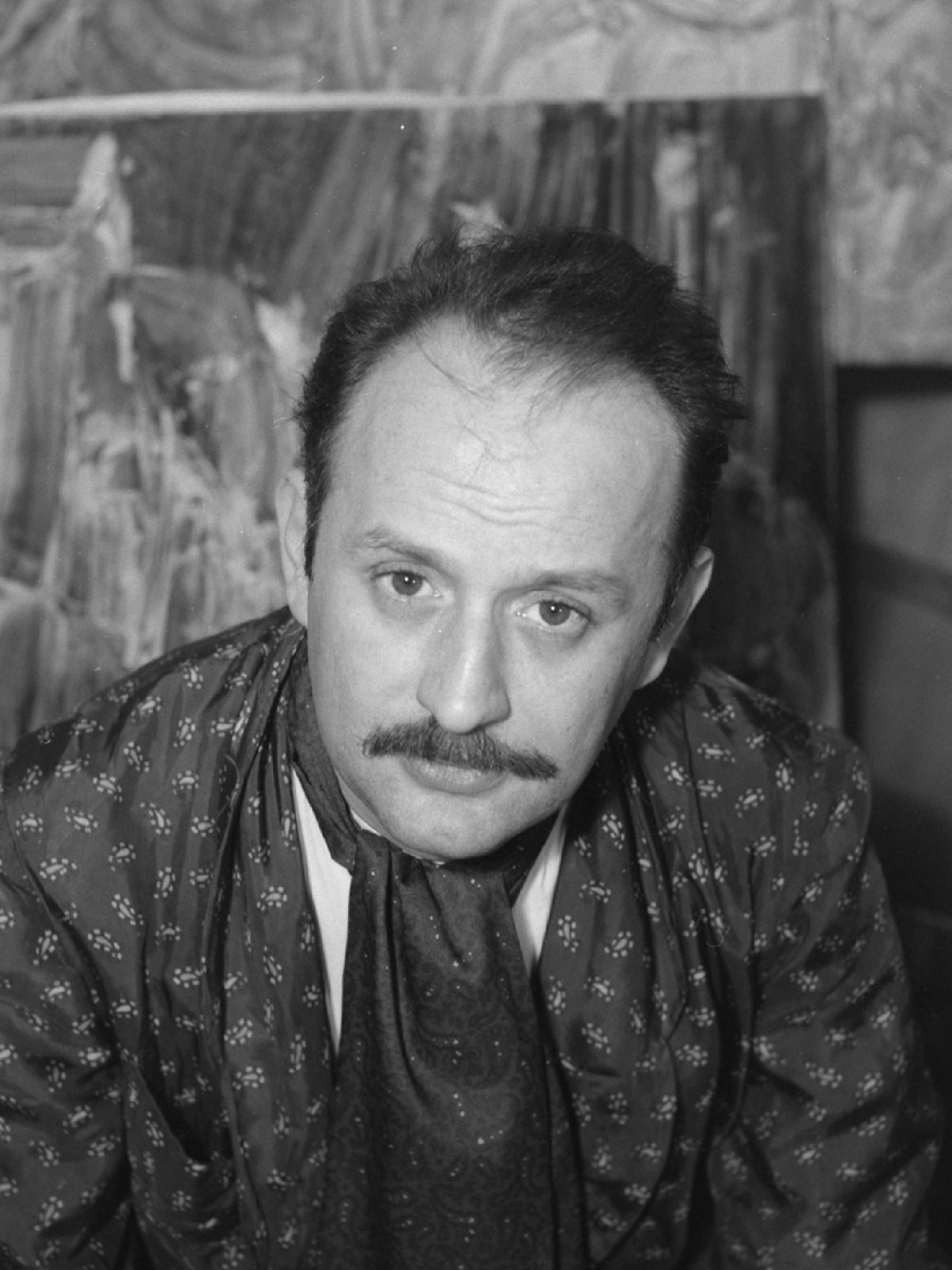
Roger-Edgar Gillet (b. 1924-2004, Paris)
Born in 1924 in Paris, Roger-Edgar Gillet lived between Paris, Sens and the Saint-Malo region, where he died in 2004. A graduate of the École Boulle and the École Nationale Supérieure des Arts Décoratifs, Roger-Edgar Gillet first worked as a decorator before devoting himself to painting. Very early on he was defended by Michel Tapié and Charles Estienne, and was part of a post-war generation of French painters, that of the Seconde École de Paris, and distinguished himself by a practice ranging from lyrical abstraction to expressionist figuration in the vein of Jean Fautrier, Paul Rebeyrolle and Jean Dubuffet.
Roger-Edgar Gillet has also been the subject of major institutional exhibitions in France and abroad: Gillet-Dodeigne at the Musée Galliera (1971, Paris), Retrospective at the CNAP (1987, Paris), La Marche des oubliés at the Centre d’art contemporain de Saint-Priest (1989), Roger-Edgar Gillet, Cinquante ans de peinture at the Musée du Palais Synodal (1999, Sens), Je Garderai un Excellent Souvenir de vous ! at the Musée Estrine (2005, Saint-Rémy de Provence), Un Regard at the Centre d’art contemporain du Parc Caillebotte (2009, Yerres), Exercices de survie, œuvres graphiques at the Musée du Mont de Piété (2017, Bergues); and in the United States, March of the forgotten at the University of Oklahoma Museum and Stéphane Janssen Collection at the Scottsdale Arts Centre (1990).
More recently, Roger-Edgar Gillet’s work has been presented in the exhibitions Construire une collection at the Musée des Beaux-Arts de Rennes and De Tiépolo à Richterat the Musée d’Art et d’Histoire de Bruxelles in 2018; as well as Recent Acquisitions of the Cabinet d’art graphique in 2018 and Galeries du XXe siècle in 2019 at the Centre Pompidou. Roger-Edgar Gillet was also awarded the Prix Fénéon in 1954 and the Catherwood Prize in 1955.
Gillet’s work is included in collections such as Abbaye d’Auberive, Auberive; Centre National des Arts Plastiques (CNAP), Paris; Fondation du roi Baudoin, Neirynck Collection, Mons; LAAC – Lieu d’Art et Action Contemporanie, Musées de Dunkerque, Dunkirk; Louisiana Museum of Modern Art, Humlebaek; Musée d’Art Moderne de la Ville de Paris, Paris; Musée des Beaux-Arts, Lyon; Mysée des Beaux-Arts, Rennes; Musée des Beaux-Arts, Rouen; Musée Estrine, Saint Rémy de Provence; Musée National d’Art Moderne - Centre Pompidou, Paris; Musée Paul Valéry, Sète; Musées royaux des Beaux-Arts, Brussels; Musée de Sens, Sens; Museu de Arte de Sao Paulo, Sao Paulo; Museum of Contemporary Art, Los Angeles; Palais des Beaux-Arts, Lille; Oslo Museum, Oslo; SACEM, Le Grand Orchestre, Mural realized in 1978, Paris; and SMAK – Municipal Museum of Contemporary Art, Ghent.
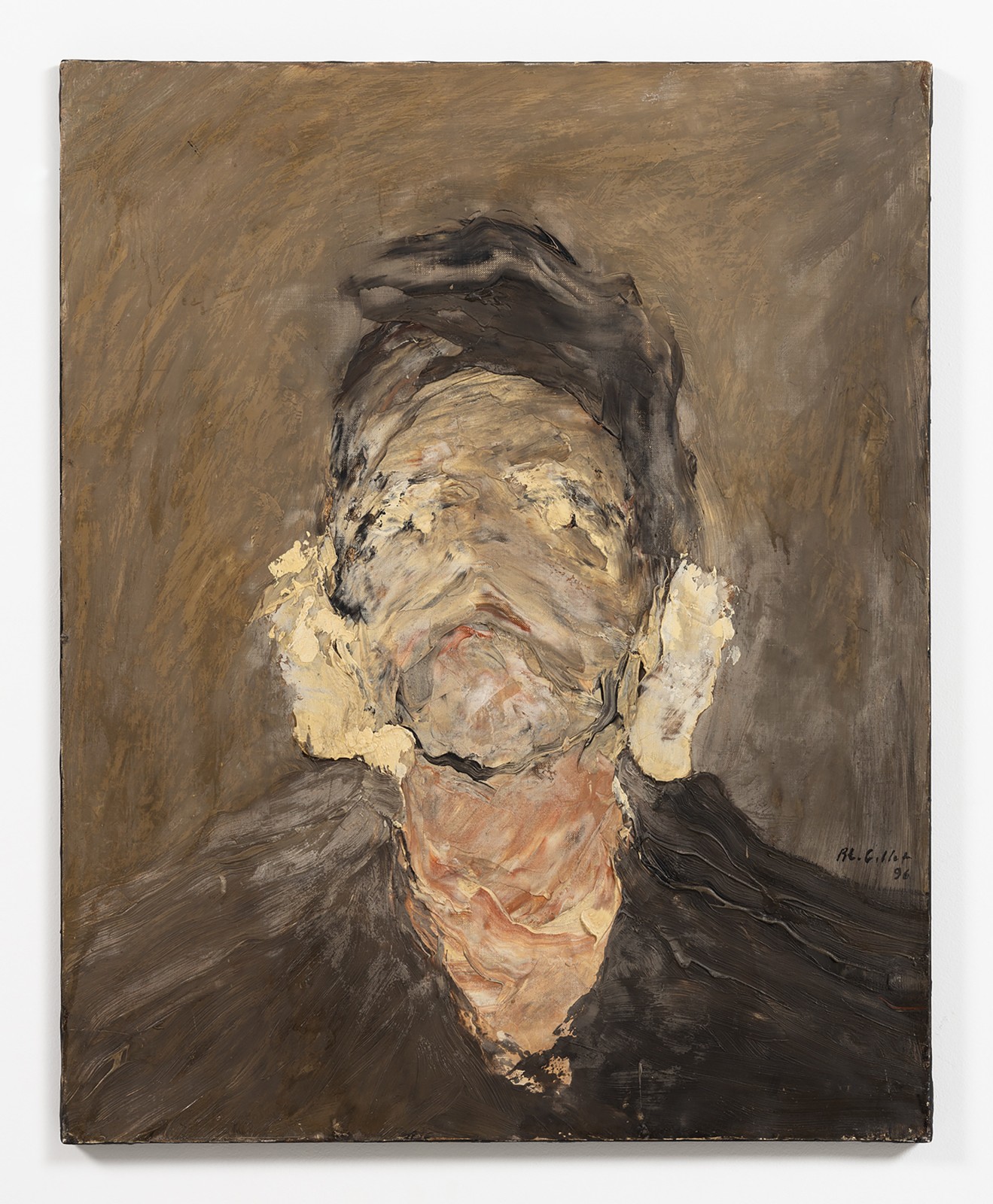
Roger-Edgar Gillet, Untitled, 1996, Oil on canvas, 31 1/2 x 25 1/4 inches
Roger Edgar-Gillet’s portraits are best characterized for their impasto techniques and earthy palette of ochres and umbers. Part of a post-war generation of French painters that gave birth to movements such Tachisme and Art Brut, Gillet’s work finds affinities with those of his immediate contemporaries such as Jean Fautrier and Jean Dubuffet. Though rooted in figuration, Gillet’s paintings bleed into the realm of abstraction, with distorted figures that serve to intimate the inner contortions of his subjects. In this, Gillet’s portraits offer the viewer a view, not of his sitters’ faces or of the traditional attributes of dress and bearing, but of their interiority.
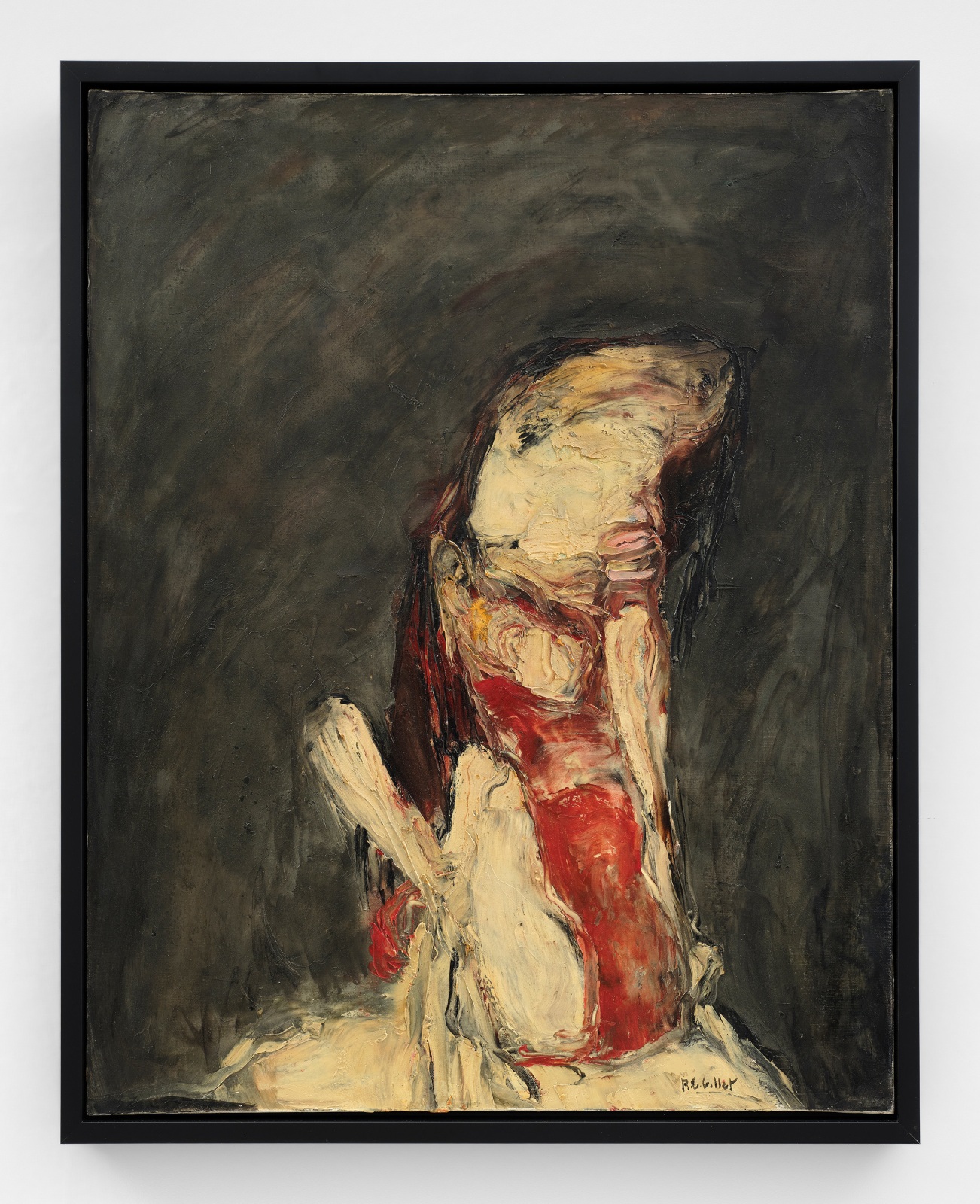
Roger-Edgar Gillet, Hétaïre, 1966, Oil on canvas, 32 x 25.5 inches
1924 Born in Paris
Graduated from the École Boulle and the École Nationale Supérieure des Arts Décoratifs
1953 First solo exhibition at a gallery opened by Joh Craven in Paris
1954 Awarded the Prix Fénéon
1955 Awarded the Catherwood Award, which enabled him to travel to New York where he met famed American artists like Jackson Pollock
Took part in the Salon de Mai in Paris
1956 Represented by Galerie Ariel and Galerie de France, two Paris galleries the latter of which would devote 18 shows to his work
1957 Participated in the Paris Biennale
1959 Took part in the Salon des Réalités Nouvelles, continuing to do so until 1964
1963 Began to lean into figuration despite it not being popular, and would continue to work figuratively throughout the rest of his career
1967 Began making regular collaborations with Galerie Stéphane Janssen
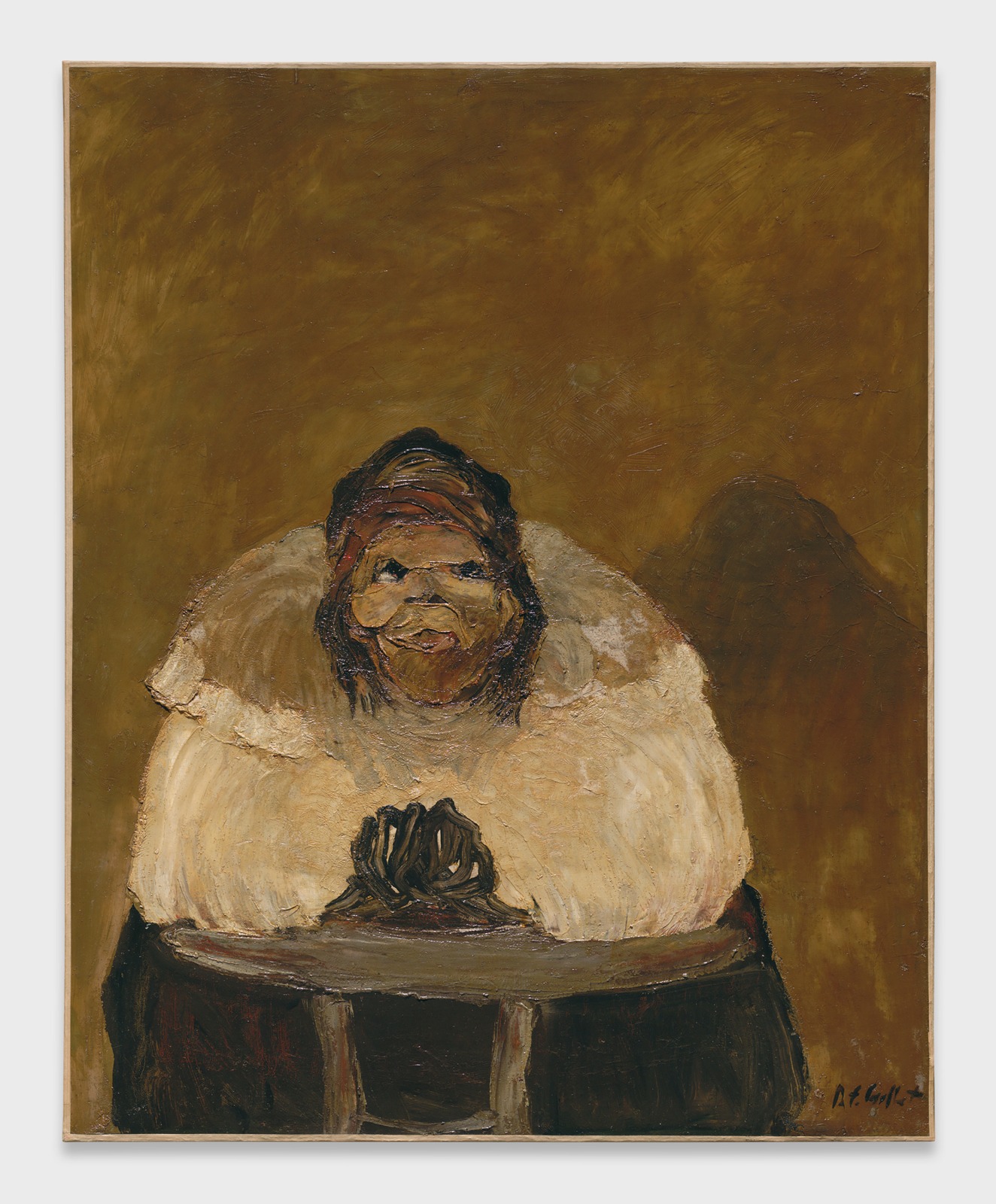
Roger-Edgar Gillet, Bigote, 1977, Oil on canvas, 39 1/4 x 31 3/4 inches
1971 Exhibited Gillet-Dodeigne at the Musée Galliera in Paris
1973 Exhibited series “Les nains” (The dwarves) at Galerie Ariel
1976 Exhibited series “Les bigots et les juges” (Bigots and judges) at Galerie Ariel
1979 Exhibited series “Les musiciens” (The musicians) at Galerie Ariel
1982 Exhibited series “Prisons et Palais” (Prisons and Palaces) at Galerie Ariel
1986 Exhibited series “Les mutants” (The mutants) at Galerie Ariel
1987 Retrospective at le Centre national des arts plastiques in Paris
1988 Exhibitions at Galerie Ariel and Foire international d’art contemporain, Paris
1989 Exhibition La Marche des oubliés at Saint-Priest

Roger-Edgar Gillet, Le soleil se leve aussi, 1988-99, Oil on canvas, 78 3/4 x 118 inches
1990 Exhibition March of the forgotten at the University of Oklahoma Museum and the Stéphane Janssen Collection at the Scottsdale Arts Center
1999 Exhibited Roger-Edgar Gillet, Cinquante ans de peinture at the Musée du Palais Synodal in Sens
2004 Death
2005 Posthumous exhibition Je garderai un Excellent Souvenir du vous! At the Musée Estrine in Saint-Rémy du Peovence
2009 Exhibition Un Regard at the Centre d’Art Contemporain du Parc Caillebotte in Yerres
2017 Exhibition Exercises de survie, oeuvres graphiques at the Musée du Mont de Piété in Bergues
2018 Exhibition Construire une collection at the Musé des Beaux-Artes de Rennes
Exhibition De Tiépolo à Richter at the Musée d’Art et d’Histoire de Bruxelles
Exhibition Recent Acquisitions of the Cabinet d’art graphique at the Centre Pompidou
2019 Exhibition Galeries du XXe siècle in 2019